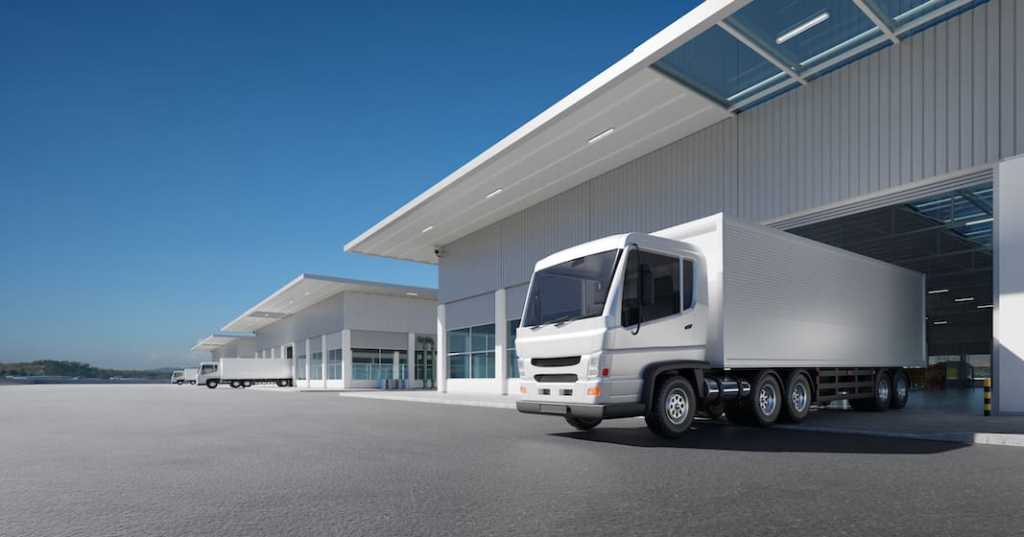Table of Contents
** Minutes
What is a floor loaded container?
What is a palletized container?
Sending inventory to FBA or other 3PLs?
From deciding between LTL and FTL to finding the right partner, there’s a lot that ecommerce businesses have to consider when it comes to freight shipping.
One of the first decisions you’ll have to make is how to load your products onto trucks. It seems simple enough, especially since there are two main options: floor loading and pallet loading.
But, like most aspects of B2B shipping, the details of your loading technique have a bigger impact than you’d think — so it’s important to think critically and find the best loading strategy for your business.
In this article, we’ll discuss the difference between floor loading and pallet loading, when to use each strategy, and how ShipBob can help you streamline your logistics across all your channels.
What is a floor loaded container?
As the name suggests, in a floor loaded container, goods are loaded directly onto the shipping container’s floor and stacked vertically.
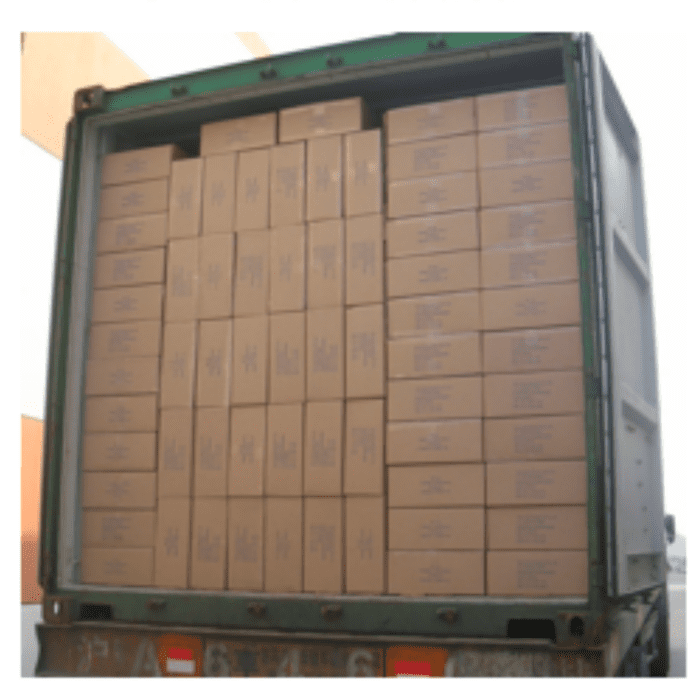
This type of loading doesn’t involve pallets, so the container is filled from floor to ceiling with goods. With this increased capacity, merchants can ship more goods per container and save on shipping costs.
What is a palletized container?
In a palletized container, goods are stacked on top of each other and placed onto a pallet, which is then loaded onto the container. The goods can be stacked on top of each other until they reach the maximum weight the pallet can hold.
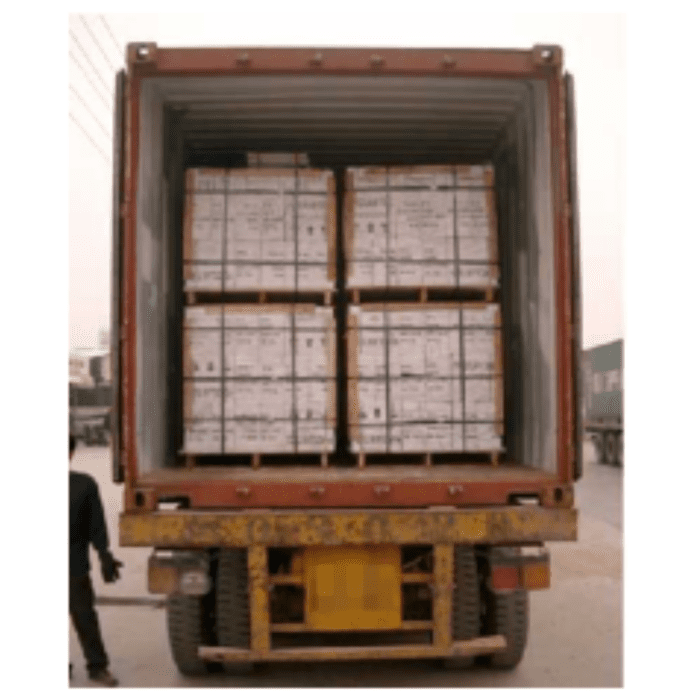
These goods are secured either using metal straps or plastic wrap to prevent them from falling off the pallet.
This makes them a much safer option for shipping delicate and fragile items, or transporting goods over long distances. As such, palletized containers are also the commonly preferred method to ship freight.
Floor loading vs. palletizing
When deciding between floor loading and palletizing, it’s important to remember that neither option is inherently better than the other. Each serves its purpose depending on a business’s project, products, and priorities.
With that said, let’s take a look at when it’s best to use floor loading, and when it’s best to palletize your freight.
When to use floor loaded containers
Since the entire container can be filled with goods and you’re not paying to ship pallets, floor loaded containers tend to incur lower freight costs. Fitting more goods into a single truckload also means that you’ll typically need to use fewer containers.
However, you may incur additional costs further down the line. For instance, floor loaded goods will need to be loaded, unloaded, and sorted manually by warehouse workers, which can increase labor costs.
You should consider using floor loading if:
- You’re transporting bulky and durable items (some examples include tires, metal coils, logs, and pipes).
- You’re transporting items that aren’t easy to box.
- The cost of shipping is particularly expensive, and you want to fill the entire container to minimize shipping costs.
- The money you save on shipping will far outweigh the additional labor cost you might incur from manually sorting and loading items.
“There are a lot of issues with shipping products like ours, but we’ve been able to do it successfully with ShipBob. I’m very glad we found a 3PL partner that can ship hundreds of 25-pound blankets everyday, while providing a great customer experience.”
Founder of My Calm Blanket
When to use pallet loaded containers
Palletizing cargo is fairly standard in freight shipping, as pallets are much easier to unload and there is no shortage of pallet companies available to help. They also tend to be more secure than floor loaded containers, making them ideal for transporting fragile and delicate items and shipping goods over long distances.
Generally, these benefits make palletizing the preferred method of freight loading — but it might not be best for all shippers.
You should consider palletizing goods if:
- You’re transporting cargo over long distances and want to minimize potential damage to the items.
- The items are fragile or delicate, and may easily break if shipped using floor loaded containers.
- The items are oddly shaped and cannot be stacked on top of each other, making floor loading a less ideal option.
- You want to protect the items from water damage by elevating them off the floor of the container.
- The cost of additional labor to sort and load items manually far outweighs the extra cost of shipping.
“We’ve learned that ShipBob has an excellent system in place, with all the resources, workflows, and processes needed to quickly and accurately fulfill all of our orders, including those that include our fragile glass bulbs and oversize lighting products. We don’t know how ShipBob does it, but it just gets done.”
Sending inventory to FBA or other 3PLs?
If your business fulfills orders using Fulfillment by Amazon, you may be wondering whether floor loading or palletizing is the right choice for you.
This is an important consideration, because your choice of container will determine your subsequent expenses and operational efficiency.
While Amazon accepts both palletized containers and floor loaded containers at their FBA warehouses, pallet loaded is the preferred method and will result in lower unloading fees.
Even if Amazon doesn’t charge you extra to unload a floor loaded container, the manual unloading process takes a long time — so you may have to pay hourly detention fees to your carrier. These fees can add up quickly if it takes more than a couple of hours to unload the container.
Amazon also places additional restrictions on the receiving floor loaded containers. If your shipment doesn’t meet these requirements, there’s a chance that the Amazon FBA warehouse will refuse the delivery.
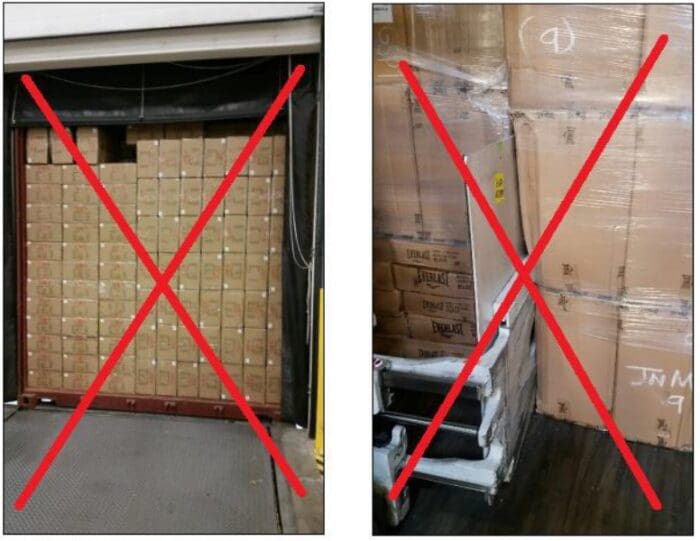
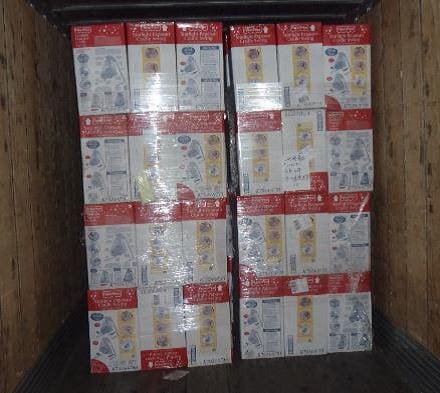
For example, for boxes that weigh more than 50 pounds, Amazon requires palletized shipments so they can easily be moved using a forklift. That means if you’re shipping boxes that weigh around 60 pounds each using a floor loaded container, there’s a good chance the FBA warehouse will reject your delivery.
Sometimes, Amazon will even reject floor loaded containers even if they meet all the FBA requirements simply because of staff availability issues. This type of incident is particularly common during busy seasons when the fulfillment workforce is stretched particularly thin.
With all these stipulations and complexities, it can be extremely challenging and costly for growing brands to deal with freight shipping on their own. That’s why many businesses choose to reroute their B2B shipments through a reliable third-party logistics partner. This helps to streamline B2B fulfillment and simplify the FBA prep process for increased efficiency.
Manage your B2B and DTC fulfillment with ShipBob
To help you tackle the complications of preparing inventory for Fulfillment by Amazon, ShipBob offers FBA Prep as a value-added service.
When you partner with ShipBob and send inventory to our fulfillment centers, ShipBob receives floor loaded pallets so that you can make full use of container capacity while reducing shipping costs. We will then prepare your inventory for FBA with our Automated FBA Prep solution.
To further automate your FBA orders, you can integrate ShipBob with Amazon and use the ShipBob dashboard to prepare orders, and to sync order and shipping label information. This helps prevent orders from going on hold, streamlining and speeding up the FBA process.
Even if you don’t use FBA, ShipBob’s suite of fulfillment services simplify freight, receiving, warehousing, and order fulfillment for both B2B and DTC orders.
For example, our FreightBob solution offers end-to-end managed freight that speeds up transit times for freight coming from China while simultaneously reducing freight costs. As a result, you can ensure that your warehouses are well-stocked throughout the year without the risk of overstocking and excess inventory.
ShipBob’s global fulfillment network also lets you distribute your inventory across different fulfillment centers for increased shipping efficiency. Your orders will be shipped out from the most convenient location, so that they can get delivered to your customers faster.
Interested in learning more about how ShipBob can simplify your B2B shipments? Click the button below to get in touch with a fulfillment expert.
Floor loading & pallet loading FAQs
Below are answers to common questions asked about floor loading and pallet loading.
What does floor loading capacity mean?
In freight shipping, floor loading capacity is the maximum amount of cargo or weight a container can hold per square foot/meter.
How do I calculate the floor load capacity?
The floor load capacity of a shipping container can be calculated by considering its cubic measurement. As such, the internal floor area and size of the container can be used to calculate its floor load capacity.
How can I increase floor loading capacity?
You can increase floor loading capacity by packing your cargo more compactly (i.e., with more units per box) and by choosing containers strategically.
